8 Things We Learned at L.A.’s Anime-Centric EigaFest
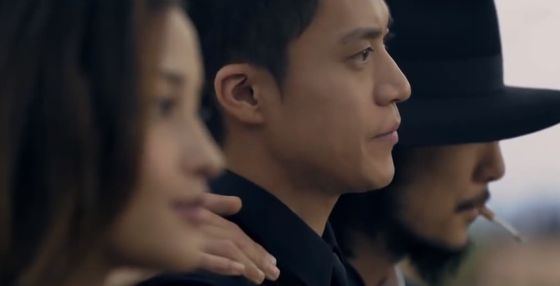 |
| Lupin III |
Now in its fourth year, EigaFest spreads the word on Japanese film to Hollywood with a weekend’s worth of screenings. It’s a cross-genre event, where documentaries, animated dramas and action flicks all have a home. This year’s festival (eiga, by the way, means film in Japanese) was anchored by two live-action versions of popular anime series – Lupin III and Rurouni Kenshi, respectively – which essentially dictated my own schedule there.
On Friday and Sunday, I hung around Hollywood’s Egyptian Theatre to catch some big, sold-out screenings and a few smaller ones. In the process, I learned a bit more about Lupin III and a handful of other anime.
1. You Don’t Have to Know Anything About Lupin III to Enjoy the New Film.
Lupin III is an extremely popular manga and anime franchise, inspired by a French series of novels. The series, created by Monkey Punch, follows the character Ars?ne Lupin III, a master thief with a hell of a lot of style. The stories have appeared in various media over the course of decades, made by different hands; In fact, the great Hayao Miyazaki’s first film was the Lupin III flick The Castle of Cagliostro.
This franchise has been exceptionally popular in Japan over the course of decades. It’s also the anime I recommend to friends who aren’t into Japanese animation. Where some people might avoid anime because they aren’t into the science fiction or supernatural elements that are so common in the works popular in the U.S., Lupin is a different beast. It’s a crime caper. Whether your poison is The Pink Panther or Ocean’s 11, you have a frame of reference for it.
Similarly, you can go into watching the live-action version of Lupin III without knowing much about the series. Director Ryuhei Kitamura and writer/producer Mata Yamamoto start from scratch. Consider this the Lupin III equivalent of The Avengers. It’s the movie where the core characters get together. You’ll meet Lupin III, as well as Daisuke Jigen, Goemon Ishikawa and Fujiko Mine. To bring in more of an Avengers comparison, Fujiko wears a Black Widow-like catsuit in the film. Unlike the famed Marvel characters, though, this isn’t a gang of superheroes. They’re thieves.
2. Lupin III Is Not Quite Comedy, But It’s Still a Fun Ride.
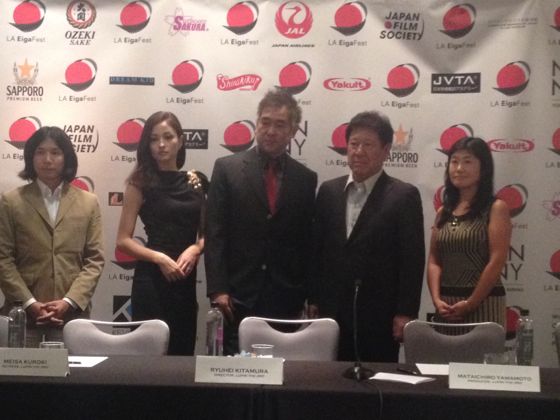 |
| Liz Ohanesian |
| Meisa Kuroki (Fujiko Mine, Lupin III), Ryuhei Kitamura (director, Lupin III) and Mata Yamamoto (producer/writer Lupin III) with festival organizers at EigaFest. |
In manga and anime form, Lupin III is a comedy. There are over-the-top schemes and cat-and-mouse games with Interpol to keep the stories fast-paced and funny. The live action version of Lupin III isn’t a comedy. It’s more like a big-budget, Hollywood-made action film.
During our interview session, producer and writer Mata Yamamoto said that the challenge was to build a story that could sustain the film. He explains that the manga is built around the comedic elements. For a feature-length movie, though, they needed a plot.
Meanwhile, director Ryuhei Kitamura worked to keep some of the comedy intact. “We had to find the right balance,” he says, adding that this is why he and Yamamoto work well together. Yamamoto could take care of the story. “My focus was to give life to those five characters,” says Kitamura. Part of that is through humor. Lupin can still make a grand entrance and he still has the hots for Fujiko Mine, all of which are used for comic relief in a film filled with big action sequences and a couple dramatic turns.
3. Lupin III Is More Timeless Than Retro-Cool.
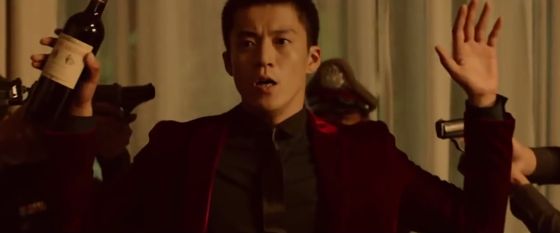 |
| Lupin III |
I love the look of the animated Lupin III. The protagonist is pretty mod with his ties, blazers and sideburns. The international settings remind me of so many 1960s films that I love. Really, I got hooked on Lupin III because it was so jet-set retro.
The new live-action movie is more contemporary. Costumes are updated, although Lupin and the gang don’t look much different from their animated counterparts. Lupin wears similar blazers, but the colors are darker, less cartoony.
Lupin III also keeps the international spirt of the original. This film takes place in various locations in Asia, primarily Thailand. They still drive cool cars and wander through immense homes and buildings.
On Friday, the team did mention that there will be a sequel. As for the location of Lupin’s next caper, that remains to be seen. Yamamoto says that he would love to film in Europe, but that would be difficult with a crew from Japan.
4. Giovanni’s Island Is the Anime You Need to See.
Apologies in advance if this sounds hyperbolic, but Giovanni’s Island is a must-see film. The anime feature was released earlier this year in Japan. I caught it Sunday morning at the EigaFest. It’s outstanding.
The story is centered around two young brothers, living on Shikotan in the Kuril Islands at the end of World War II. Japan loses the war and the Soviet Union lands on the island as an occupying force. Junpei, the elder brother, makes friends with a young Russian girl named Tanya. They share some beautiful moments together, but as the occupation continues, their friendship is tested and Junpei’s family faces incredibly hard times.
All through this, there is reference to the Japanese author Kenji Miyazawa’s novel Night on the Galactic Railroad (a book that I now need to find and read). The animation takes whimsical turns when the film delves into the book references and that sharp twist in style makes for an incredibly beautiful film. Giovanni’s Island is also quite sad, which brings us to the next point.
5. You Might Not Want to See Giovanni’s Island with People.
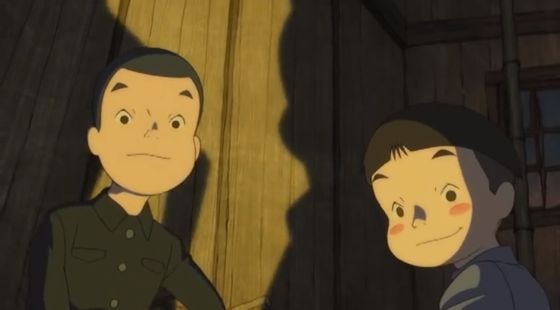 |
| Giovanni’s Island |
On a Depressing Anime scale of 1 to 10, with 10 reserved for Grave of the Fireflies, Giovanni’s Island comes in about 9.5. It’s brutal.
To be fair, I should have known this to be a tear-jerker when I read that it was about little kids and war. When the youngest child first appears on screen with the rosiest, most adorable cheeks you’ve ever seen, it’s a clear-cut sign that things won’t end well. And they don’t. I won’t spoil it for you; just trust me when I say bring tissue and extra eyeliner.
It didn’t take long for my right eye to feel the burn of liquid liner mixed with tears. I would blame it on allergies, but that excuse went out the door with the invention of Zyrtec. Meanwhile, inside this tiny screening room on the bottom level of the Egyptian Theatre, the silence was broken by an occasional snivel. By the film’s epilogue, the conversation on screen was accompanied by rounds of sniff-sniff-deep breath-sniff-sniff.
6. There Are Some Vintage Anime Series Worth Watching Now, if You Can Find Them.
Sunday afternoon, I hit up a screening called “A Merciless Life and Death: Ninja Anime Classics,” mostly because I was neither familiar with manga creator Sanpei Shirato or the anime based on his tales Sasuke and Kamui. Both were great, but mostly, I was taken by the former.
Sasuke is the story of a young boy who is a ninja. In the two episodes that I saw, the talented fighter deals with loss. He grieves for his mother and becomes frustrated when his father leaves temporarily for ninja work. In another episode, he sees the devastating consequences that afflict others when they rush to action without proper training. Sasuke is part of that tradition of kid-friendly anime that’s far heavier what’s usually considered appropriate for school-age audiences in the U.S.
7. People Talk About Class Struggle in Media and It Doesn’t Turn Into a Trollfest.
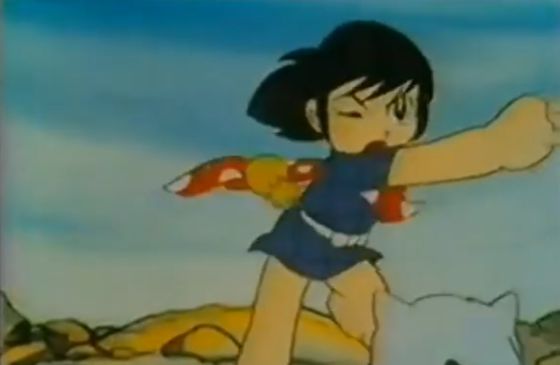 |
| Sasuke |
Jonathan Hall, who teaches film history at Pomona College, introduced the Sasuske and Kamui episodes and led the question-and-answer discussion period after the screenings. He gave us some background on the series’ creator, Sanpei Shirato, the son of a left-leaning artist who himself became a left-leaning artist. He talked about the “outsiders” and notions of a class system that fill Shirato’s work.
Later on, audience members asked smart questions about the series and the author. They wondered why the shows never officially made it to the U.S. They questioned various ways of understanding the material – “There are many ways to read something,” Hall answered – with curiosity and a general sense of respect towards others in the room. Throughout the session, words like “Marxist” and “proletariat” were tossed around without any sort of judgment. They were merely descriptive terms. There were no trolls, no rage-y rants. It was nice, civil, intelligent discussion – pretty much the opposite of the Internet. (Topless Robot commenters excluded.) After days of getting sucked into hashtags and trending topics that I know I should avoid, it was a pleasure to observe something like this.
8. I Probably Should Have Watched More Kenshin.
I have watched a lot of anime over the years, but there are still a few really big series that I missed. Rurouni Kenshin is one of them. It’s one of those titles that I’ve heard friends drop repeatedly, but, to date, I’ve seen one episode of the anime. There’s no reason why, except for maybe a lack of hours in the day.
Anyhow, Rurouni Kenshin: Kyoto Inferno made it’s U.S. premiere Sunday night at EigaFest. This movie, which came out in Japan last month, is the second in a series of live action take on the adventures of an ex-assassin. I thought that checking out Kyoto Inferno would be a good way to dip my toes into the franchise. It was, actually, a great way to see how much of an impact Rurouni Kenshin has had on American anime fans, since the screening sold out. However, I quickly felt like an outsider at the Eyptian Theatre. From the start of the film, fans were screaming and cheering when characters turned up on screen. I couldn’t understand the excitement. I loved the numerous fight scenes, which were beautifully choreographed, and the art direction was captivating. Otherwise, I felt like I needed more background to become fully invested in it. That’s not bad, though; it just means that I need to watch the anime series (all of it) and the first live-action movie.
Previously by Liz Ohanesian
“8 Things I Learned at Power Morphicon 2014”
“The 18 Coolest Exclusives to Snag at San Diego Comic-Con 2014”
“20 Best Cosplays We Saw at Anime Expo 2014”
“14 Episodes of Highlander You Need to Watch”
“7 Lessons Learned From Watching Star Wars with Someone Who Never Saw It”
“9 Awesome Things You Might Not Know About Cartoon Network Studios”
“7 Reasons Why Marvel Superhero Movies Are Really Boring”
